Home renovation and repairs: Healthy living - why plants are the key
Keeping plants indoors has some very real benefits for our mental and physical wellbeing. ‘Plant parents’ are showing us how it’s done.
Property
Don't miss out on the headlines from Property. Followed categories will be added to My News.
The Fixer is here to answer all your home renovation and repair questions.
Email us at athome@news.com.au
***
Keeping plants indoors has some very real benefits to our wellbeing. Having them around has been shown to improve focus and productivity as well as relieve stress and hey, they look lovely too.
Indeed, such has been their popularity that some people now refer to themselves as ‘plant parents’ and fret about leaving them, even for a few days.
That might be taking things a little too far, but there’s no doubting that a pot plant here and there is always a positive.
By nature, us gardeners are an optimistic bunch. We do what we can and hope for the best. But that doesn’t mean we need to be in the dark about plant care. No matter what you’re growing you need to consider the time of year.
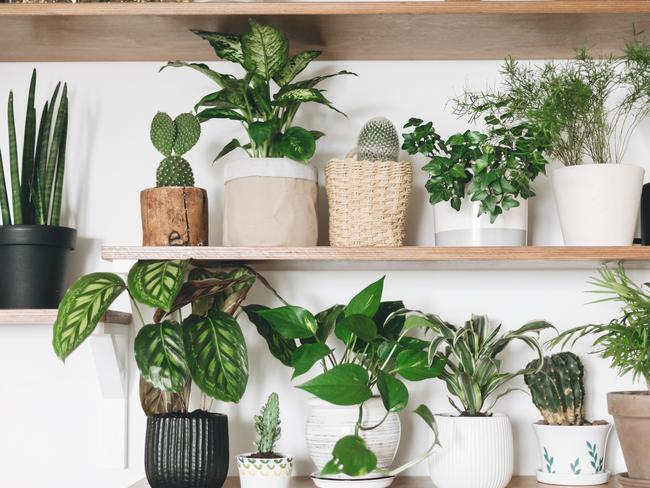
Sweet basil, for example, is usually grown as an annual in spring and summer and will often just turn up its toes over the colder months. Coriander will often bolt to seed over summer but now is a good time to grow it. No matter your plant, always use a decent-sized pot, about 20cm wide, and quality potting mix.
Q. I’m interested in growing a few plants but whether I put them inside or on the balcony, they curl up their toes and die.
A. Too many indoor plants are killed by under or over watering. There are all sorts of gadgets on the market to measure water levels, but the finger test is still the best. Push your finger into the dirt. If the soil is dry a couple of centimeters down, it needs a drink. If the plant feels quite damp, let it drain properly (maybe in the bath or the sink). If there are dead sections cut back and wait a few weeks.
Q. What are the best edible plants to grow for small balconies? I’ve tried a few but the results have been disappointing.
A. A west-facing balcony will cop afternoon sun, practically cooking tender leaves, but a north or east facing balcony can be quite productive. If your balcony does get a bit hot, try herbs such as rosemary, thyme, oregano and sage in pots.
Parsley and basil also like a lot of sun, as long as it isn’t too intense. If you’re keen, set up a bit of shade cloth to provide protection from the worst of the heat. For veg options, cherry tomatoes are super easy and productive, although they do best over summer.

Leafy greens such as lettuce and rocket are reliable performers year round. Harvest a few leaves as you go and they’ll continue producing new shoots. Pots dry out quickly so they will benefit from a watering at least every other day. To give your vegetable seedlings the best chance, add some slow release fertiliser or, my favourite, liquid seaweed fertiliser, as per the directions. It does smell a bit but your plants will love you for it.
Q. Is there anything I can do about yellowing leaves? I thought putting my Devil’s Ivy near the window would help but it seems to have made it worse.
A. I love Devil’s Ivy — all that dramatic trailing action from such a low maintenance, leafy plant. And those variegated leaves are just gorgeous. Yellow leaves with Devil’s Ivy usually comes down to one of two causes. Firstly, I would advise you check your watering. This plant will develop root rot if it gets too wet, with yellow leaves an indicator that all is not well. As a general rule, watering once a week in summer and once a month in winter is a good guide. Leaves can also turn yellow when exposed to too much sun. Perhaps move your plant back from the window and give it a light prune, which will promote more growth, and then, let it be.

MENDING FENCES: SIMPLE FIXES TO NEIGHBOURLY DISPUTES
Unless you have a house on acreage somewhere you likely live within reasonable proximity to your neighbours.
Indeed, as land becomes scarce in our capital cities, the size of blocks has continued to shrink, meaning that you may now find yourself living closer to your neighbours than ever before. For the most part that’s just fine.
It can even be enjoyable, but things can get tricky when it comes to the building (and even the maintenance) of boundary fences. Here, a quick guide as to how to get the process rolling smoothly and keep it that way.
Q. The boundary fence needs replacing but we don’t really have a relationship with the neighbours. What’s the best way to tackle this?
A. If this is the first time you’ve interacted with the neighbours, I’d suggest a two-pronged approach.
Firstly, check in with council regarding what you can do with your fence. What are the height requirements? What materials can be used?

Some councils are quite relaxed while others, such as those in heritage areas, might only allow a timber fence up to a certain height. If you don’t already have a map of your property, council should be able to supply you with one clearly showing the boundary between you and your neighbour.
You’ll need this when you’ve engaged a fencing contractor anyway. While you’re doing this, I’d suggest making an effort to meet and greet the neighbours, without coming on too strong. A friendly but regular ‘good morning’ will do. Look for common ground (kids or pets or plants) to create the start of a bond. You don’t need to be best friends but it will help when negotiating later.

Q. Is there a good way of handling disputes if they arise?
A. Boundary fences are the number one reason neighbours end up in mediation or worse, going to court.
No one wants that.
Let your neighbours know in person that you’d like to replace the fence, offer to get some quotes and suggest they do the same. While it might seem like a hassle, organising the fencing contractor yourself will give you more control over the end product.
As a general rule, the person who engages the fencing contractor ends up with the ‘good’ side of the fence, that is, the side without the backer rails.
Unless there is a sense of urgency, like a dog that needs containing or the risk of a fence collapse, give your neighbours time to think it over. They might feel railroaded if things move too fast or they are bombarded by paperwork.
Present any quotes, with details of materials and costs.
Q. What if they don’t want to pay their share?
A. Sometimes, no matter how much goodwill you’ve extended, attempts to negotiate amicably will fail. It’s called something slightly different in each state, but a Fencing Notice can be served on your neighbour, in person or by post.

Even when neighbours agree, a formal notice is a good idea for everyone’s records.
This will include address details, how long and high the fence will be and what it will be made of, when the work will start and finish and how the costs are to be divided. Costs are usually split equally but sometimes, if one neighbour would prefer a cheaper option, the other neighbour will make up the difference.
Some fencing contractors will seek payment from each neighbour separately, avoiding awkwardness. If you do end up in a dispute, your local Community Justice Centre is a free state government service which has a record of resolving agreements between neighbours 80 per cent of the time. Getting on with our neighbours has never been more important. So don’t let a fence upgrade break you up.
More: cjc.justice.nsw.gov.au
BRING PERSONALITY AND SOUL TO YOUR NEW HOME
The start of a building project is so exciting.
Often the result of a lot of discussion, dreaming and planning, most people can’t wait to get started. But building a new house can be stressful. By the time the place is finally finished, the new owners often experience a sense of relief – and exhaustion.
Just moving everyone into the house can be quite the task so that sometimes there’s not a lot of energy left over to give to creating spaces that feel more like home.
Once the moving truck has packed up and left, it can be quite unsettling for everyone to be living somewhere that doesn’t quite feel like home.

But don’t panic.
We’ve just finished building our dream home but it’s so new that it feels a bit, well, soulless. How can I make it feel like home without cluttering it up? Interior designer Karen Akers says the first thing to remember is that there is no need to rush into more decision making just yet.
We’ve brought some of the furnishings from our old house with us but it still feels, I don’t know, empty.
If you’ve already decided what you want to bring to the new house, such as larger pieces of much-loved furniture, you can use those as the starting point for the look of your new space.
Karen says adding colour and texture to the walls of a room is a great way to make it feel inviting. But it should still feel like you.
Collections of books or records are great to have on display if that’s what you’re into.
“You don’t have to keep everything your mum gave you but one or two things can be great to add some life to a room.”
“I like nothing more than walking into a space and being able to read something into the person who lives there,” says Karen.
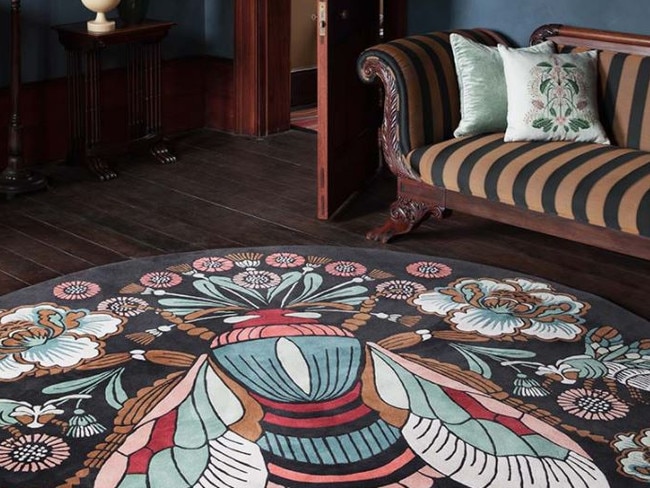
Floor rugs add warmth and create separate zone
Rugs work to introduce colour and personality, but it’s important that you get the scale right.
“If you already have rugs down, but it doesn’t feel warmer, often it means the size of the rug is incorrect,” says Karen. “It’s a problem I see a lot. But if the rug is big enough, it should cover the span of the floor and reach under the feet of the sofas, too,” she says. Adding warmth and personality is not all that rugs, particularly plush, thick ones, can do. Quality versions will not only look and feel luxurious underfoot, they will also work to soundproof your home somewhat, especially if you have hard flooring such as wood or tiles. Finally, a new rug allows you to update a room with the latest looks without shelling out too much of your hard-earned cash.
For inexpensive high-end rugs check out designerrugs.com.au.
Wallpaper instantly adds personality and a wow factor to the room
“Artworks tend to look quite good with wallpaper and they make the room feel more interesting and inviting, and also add a sense of intrigue,” says Karen. She recommends you choose a level of pattern and colour that matches your personality. “Quieter types might like simple pin stripes, the more bold might enjoy patterns. The pattern doesn’t have to be loud and the colours don’t have to be bright if that’s not you,” she says.
“I always advise my clients to live in a space for at least six weeks before they change anything to see how they use the spaces and how the light moves through it,” she says.
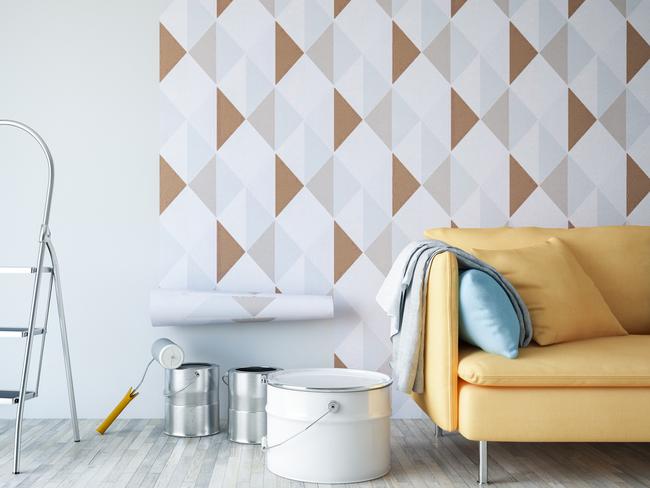
I haven’t a clue of where to start and I don’t want to lose money making mistakes.
Before you start whipping out the paint brushes and rolls of wallpaper, it’s a great idea to create a mood board where you can see the patterns, colours and textures, as well as objects, together. You’re looking for a unified result, but not so matchy-matchy that it lacks life. Karen says mixing in a few older things, or objects that have meaning for you, with newer furniture can make it feel more like home.
Nothing beats living in the space to help you
Given all the decisions you’ve made about fixings, fixtures and surfaces, it might feel like you should know the house. But nothing beats living in it to get to know a space. Give yourself some time.
If you’ve already decided what you wanted to bring to the new house, like larger pieces of furniture, you can use them as the starting for your new space. Karen says adding colour and texture to the walls of a room is a great way to make it feel inviting. But it should still feel like you.
If your new home has an open plan living area, floor rugs offer an opportunity to create living and dining zones, as well as introducing some colour. Karen says it’s all about getting the scale right.

“If you already have rugs down but it doesn’t feel warmer, often it means the size of the rug is incorrect,” she says. “It’s a problem I see a lot. If the rug is big enough, it should be able to go under the feet of the sofas.”
Create a moodboard, don’t be afraid to change
Before you start whipping out the paint brushes and rolls of wallpaper, it’s a great idea to create a moodboard where you can see the patterns, colours and textures, as well as objects, together. You’re looking for a unified result, but want to avoid a vibe that’s so matchy-matchy that it lacks life. Karen says mixing in a few older things or objects that have meaning for you alongside more modern furniture can make the space feel more like a real home.
“You don’t have to keep everything your mum gave you, but one or two things can be great to add some life to a room,” says Karen.
Don’t be afraid to change things up down the track, however, if you decide you don’t like the space or that you’re bored with it.
You can change the colour of the walls in a weekend or move furniture into another room to give it a new lease on life.
It’s your home, enjoy it.
More: karenakers.com.au

QUICK, CLEVER TIPS TO REMAKE YOUR BACKYARD
The weather in Australia can be brutal and it certainly has been of late. There were soaring temperatures and bushfires last year and this year has been cooler and, in recent weeks, devastatingly wet in many areas.
Unpredictable weather patterns aside, mid-to-late autumn is generally a pleasant time for spending time outdoors. And with the Easter break upon us, now is a great time to spruce up your outdoor living zone.
With a bit of attention, a concrete patio of almost any size can become valuable living space. Aspect matters but it can be overcome. Northern light is ideal, and an east-facing outdoor area is also lovely, especially in the morning.

A southern-facing yard can be cold at times, but a windbreak - of plants or a screen - will cosy it up. The least desirable option is a west-facing yard, where the afternoon sun can make a concrete slab feel hot and uncomfortable. I recommend seeking design help to manage that heat gain effectively. Good advice will save you money in the long run.
Aspect aside, as long as your slab is level and in good nick, here are a few easy ways to spruce it up.
Pull out the paint
Before you decide to go fully DIY, seek some project quotes first. Platforms like hipages make it easier than ever to get in touch with motivated tradies.
Also give some thought to how long you intend to stay in your home before you start spending. If it’s at least five years, it likely makes sense to hire a professional, especially if you think you might tile the patio at some point. If, however, you’re just seeking a quick refresh, painting the slab is a good interim solution. Bunnings has an excellent, simple guide to painting concrete, and it’s absolutely achievable over a weekend. Check that there’s no water coming through the slab first and that it doesn’t already have a sealer on it as this will affect how the paint adheres. After that you’re good to go. This is a great solution for slabs in good condition that just look a bit tired.

Suitable seating
No outdoor entertaining zone is complete without comfortable seating and furniture design has come a long way, especially in the past five years. There are plenty of options for all budgets but I’m particularly in love with timber-look aluminium lounges and dining suites. They allow you to enjoy the look of painted timber, with the hardwearing, lightweight performance of aluminium, powdercoated in a wide range of colours. Outdoor fabrics with quick-dry foam inserts are an absolute must for low-fuss, long-lasting cushions, to up the comfort levels, whether dining or reclining.
Tile-ish transformation
If you like the look of a deck but want to avoid the hassle of construction, it’s now a fairly simple exercise to create a floating outdoor floor using DIY decking tiles. Ikea has a range of options, from timber tiles through to artificial turf and tile-look options, all laid over a plastic grid system. They’re a great idea, particularly for renters, or owners wishing to transform small areas. For something more permanent, look for wood composite tiles designed to withstand outdoor conditions long term. You can choose from a traditional linear decking look or basket weave styles. If you love the look and feel of traditional outdoor tiles, and intend to stay in your home for a while, it’s a great investment. Ask the supplier to recommend local tilers.

Put a roof on it
Whether you choose a solid roof or an open pergola will depend on a number of factors, including council regulations. If it isn’t visible from the street, is under a certain size and doesn’t impact on the neighbours in terms of privacy or overshadowing, you may not need approval to erect a pergola. But do check before you begin. Pergolas are not typically weatherproof but they allow for better airflow than a solid roof. With the addition of a deciduous vine, such as a wisteria or grapevine, you’ll be protected from the sun in summer and can enjoy the winter sunshine. Companies such as Stratco can supply you with a solid roof pergola, built to your specifications, which you can even install yourself. If you think airflow might be an issue, plan ahead and install an outdoor ceiling fan. You’ll definitely need to engage an electrician for this part of the job. Again, it’s worthwhile considering the aspect and where the breezes come from. This will influence your screening options: wider slats will allow for air movement while still maintaining privacy.
KEYS TO DECLUTTERING
Moving house is stressful at the best of times, but when you’re looking to downsize as well, the pressure is really on. For many, it’s a process of saying goodbye to one stage of life as a family, and moving onto another as a couple.
Depending on where you’re at, this can be a time of grieving or celebration. Professional organiser Lissanne Oliver from SORTED! has moved four times in the past two years and says downsizing is the perfect opportunity to declutter your home – and your life.
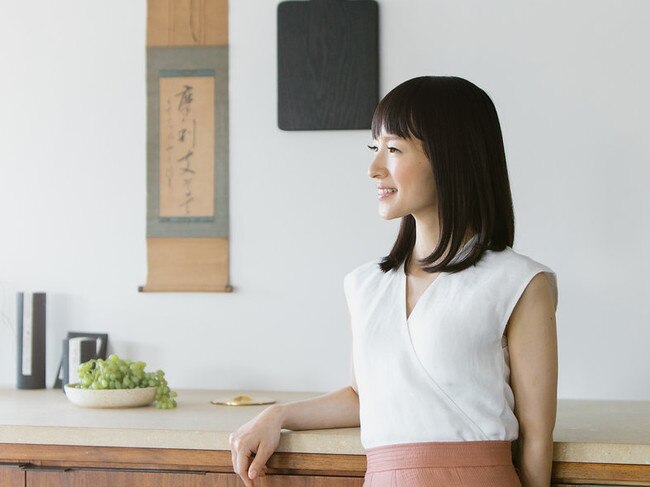
The key is to start early to avoid taking a whole lot of unwanted stuff with you by default or, worse still, putting it into costly storage. If you are considering putting some things into storage, Lissanne suggests you think long and hard before you commit.
“What goes into storage first is often what is of least value to you,” she says.
“The stuff you pick last is generally of less value to you. Look hard at what you have in deep storage.”
Do this as early in the process as possible, so that you have time to get rid of things before your big move.
Q. But what about all our furniture?
A. Depending on the style and size of your new place, your existing furniture may not be the right fit. Apart from sites such as Gumtree, there are plenty of neighbourhood groups on social media where you can sell off your old furniture if you’re not too fussy about price. If you have designer pieces, there are a number of dealers who may be interested. More often than not, though, the dining suite you have cherished for 30 years is not going to be valued in the same way by someone else. Be prepared to let it go to charity or possibly even council clean up.
Q. We have quite a large kitchen packed with stuff, how do we sort through it all?
A. The kitchen tends to be a sticking point for many. Professional organisers often talk about tackling duplication in the kitchen. You may be surprised to discover how many vegetable peelers and tongs you own. It’s an easy fix to whittle it down to just one or two of each.

Be realistic too about whether you’ll want to entertain more than a couple of friends at your new place. That 12-place dinner set may no longer be necessary, especially if you have dining out options nearby.
Q. I need tips on sentimental stuff, it’s so hard to let go.
A. Perhaps the best way to detach yourself from the kids’ old primary school reports, old clothes and photos of people you’re no longer in touch with is to play museum curator of your own life.
“With memorabilia, the question you should ask is ‘what tells your story?’,” says Lissanne. “You might have kept your school books but school may have been an awful experience for you, or just pedestrian. So why are you keeping it?”
This doesn’t mean you have to dump everything.
“School reports can be funny,” says Lissanne.
“I have a couple of reports that say ‘she could be more organised’.”
TURNING NOISY HOUSES QUIET
When homes are under-furnished they can become noisy.
Noise is best absorbed by soft surfaces, so consider laying down several large thick rugs. A bookcase is another effective noise buffer. Sealing gaps around windows and doors, and closing off vents will help too. Lined curtains or heavy blinds are a must and if you can afford it, wall and ceiling insulation is also beneficial.
For weatherboard or brick veneer houses, Gyprock has Soundchek – a sound insulation plasterboard product.
Q. I bought beautiful linen sheets and spilt moisturiser on them the first day I put them on the bed. Can the stain be removed or do I need new ones?
A. There’s a lot to love about linen sheets. They’re warm in winter, cool in summer, but they come with a hefty price tag. I’m hoping at this stage that you’ve scraped off (rather than rubbed in) any residual moisturiser. This is an oil-based stain so pretreat with an enzyme-based stain remover and work it in with your fingers. Rub in a heavy duty laundry detergent and let it sit on the stain for 15 minutes before gently scrubbing the stain and rinsing the affected spot with hot water. A hot water wash can damage linen fibres and lead to shrinkage, so run the sheets through the washing machine on a cold cycle and hang out to dry. Regardless of the outcome, I’d hold on to the sheets. They will perform just as well.
Q. I’ve painted my hallway several times but every time we have a heavy storm brown damp spots start to show and I am forced to scrub back and paint again. What to do?
This sounds like a problem with your roof, not the hallway walls. Ask a recommended roofing specialist, or even a builder you trust, to take a look and see if they can identify the source of the leak and suggest a plan of attack. Damage to tiled roofs tends to be easier to spot because water can run along a corrugated steel roof before entering the house.
Also look closely at the windows near the brown marks. If the sills are rotten water may enter here also.
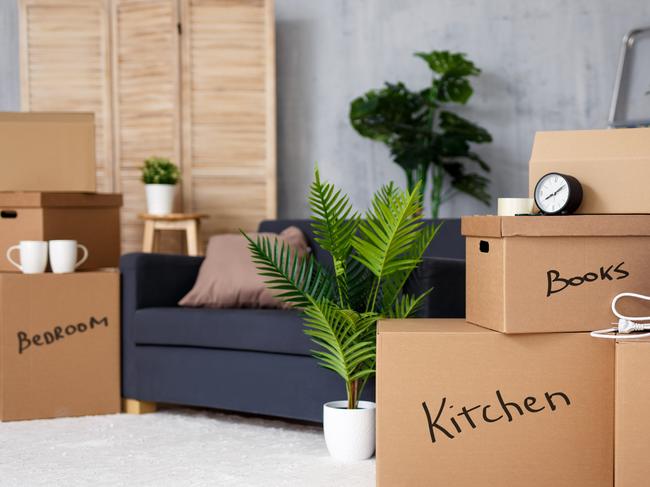
Q. I bought a home with wallpaper which I love, but it’s not in the best of shape with some sheets coming loose and others showing general wear and tear. Is it possible to restore slightly damaged wallpaper or am I better off starting again?
I love wallpaper but hanging it is one of my least favourite DIY jobs. If you already have wallpaper you love, you’re more than halfway there. There are a number of companies who can create custom designed wallpaper for those missing sections. For the best results with patching and re-attaching the loose wallpaper, obtain a quote or three from a professional. Some jobs are best left to the pros.
DEADLY HIDDEN DANGER IN OUR HOMES
There’s a lot more to mould than unsightly walls and ceilings.
A symptom of poor ventilation and dampness in your house, mould is made up of spores, which can become airborne, leading to serious health repercussions for your family. The most dangerous is black mould, which can cause everything from a runny nose through to life-threatening respiratory problems.
Removing mould is not difficult, but if you don’t deal with the underlying causes, it will most likely return. Preventing mould from growing may be as simple as turning on exhaust fans in moist areas such as the kitchen and bathrooms.
But it may also be caused by rising damp or leaking pipes, which may prove more costly to fix.

SIMPLE BUT EFFECTIVE MOULD FIX
Most people become aware of mould because they see it, but it can also thrive between wall cavities, in basements or behind wallpaper. It may be worth calling in the professionals if you suspect you have mould, but you can’t locate it.
If you need to remove it, there are simple, but effective ways of dealing with it. If it’s a mild case, add one-part water to four-parts white vinegar and use a sponge to clean it off. For more extensive mould, you can use 250ml of bleach added to 4L of water to clean.
Given you are working with bleach and spores can be airborne, it’s a good idea to wear a mask, as well as rubber gloves. Wipe down afterwards, making sure the surface is completely dry.
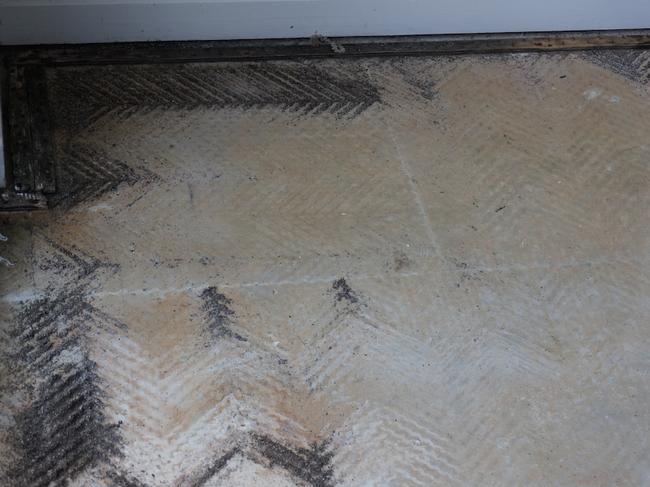
Q. The parquetry floor in my 100-year-old home is beautiful but it is missing a square metre or so in several rooms. Do I rip it up or repair?
A. Teak is an excellent choice for outdoor furniture because it is naturally water repellent and requires very little maintenance. I’m guessing that by saying it looks hammered, you mean it has turned silver from its original honey colour and has a rougher finish. This is standard for outdoor timbers, but if you don’t like the look, you can bring it back to its original colour. To prepare it, make sure the timber is thoroughly wet (the day after rain is ideal) and clean it with warm soapy water and a soft bristled brush. You’ll find it will clean easily but use fine sandpaper for stubborn stains. Wait until it is thoroughly dry before applying a teak oil or sealant. Feast Watson has a product ideal for teak. You’ll need to give it a clean and fresh oil about once a year to keep it looking its best.

Firstly, well done you. Parquetry flooring of that age is a rarity in Australia, although not so unusual in Europe. Parquetry generally refers to pieces of timber placed together in a variety of patterns to create a floor. In recent years, it has become quite popular as an alternative to regular floorboards, albeit an expensive option at around $150sqm to $200sqm. So if you have a parquetry floor, it’s definitely worth looking after. If the pieces are still there, you can glue them back in place but if not, call in the professionals, who will set your floor up for the next 100 years.
Q. I have three beautiful French chandeliers in my home but they’re filthy. How do I clean them without damaging them, or myself?
A. There’s nothing like a chandelier to bring the bling but they do come with a bit of extra work. I’m assuming that your chandeliers are all installed. The least intrusive option is to clean them in place, but if you have three, it might be better to remove all of them to, say, the dining table for safer access. Because you’re working with electrics, you may need to switch the power off before you remove them. For crystal chandeliers, add one part isopropyl alcohol to four parts water to a spray bottle. It’s ideal for cutting through grease. Clean with a lint free cloth. If you are taking them apart, be sure to take lots of photos so you know how they all fit back together.

Q. I bought in an outdoor teak table just 12 months ago but it already looks hammered. How can I bring it back to life and protect it too?
A. Teak is an excellent choice for outdoor furniture because it is naturally water repellent and requires very little maintenance. I’m guessing that by saying it looks hammered, you mean it has turned silver from its original honey colour and has a rougher finish. This is standard for outdoor timbers, but if you don’t like the look, you can bring it back to its original colour. To prepare it, make sure the timber is thoroughly wet (the day after rain is ideal) and clean it with warm soapy water and a soft bristled brush. You’ll find it will clean easily but use fine sandpaper for stubborn stains. Wait until it is thoroughly dry before applying a teak oil or sealant. Feast Watson has a product ideal for teak. You’ll need to give it a clean and fresh oil about once a year to keep it looking its best.
REBOOT AND REFRESH YOUR OLD FURNITURE
I am a bit of a magnet for old furniture. Roadside council clean ups, an old desk stashed at the back of the op shop – you name it, I’ve dragged it home.
Once, I spotted an Art Deco lounge on the roadside, strapped it to the roof racks of my car and went on my way. The problem was I had no idea what to do with it next so I went to a professional and asked for advice. This is what I discovered.
1. Is it worth recovering?
The short answer is, it depends.
In my case, I found a local upholsterer willing to work with my slightly smelly Art Deco lounge. It had a beautiful shape and he could see it was a hardwood frame. He rebuilt it from
the frame up and, 20 years later, it’s still my favourite seat in the house.
Alberto Molina, from Molina Upholstery Decor, has been upholstering furniture for more than 35 years and says whether a piece of furniture is worth recovering depends on how well it was made in the first place.

Hardwood frames are ideal, while furniture made from MDF or chipboard is generally beyond help. Solid timber needs to be free of damage from woodboring beetles, better known as borers, whose larvae feed on wood, causing damage.
“A lot of people pick up an old piece and if it has borers it is very hard to save because it weakens the frame,” he says.
Alberto says a good upholsterer can also alter the comfort level of seating, depending on the cushioning, perhaps transforming your grandmother’s uncomfortable armchair into the perfect relaxation destination.
2. What are your options?
Businesses such as the Bower Reuse & Repair Centre run workshops on everything from simple furniture fixes to completely repurposing old furniture. They offer online courses and one-on-one Zoom meetings to talk you through your project too, so don’t be shy. Also, check online for courses in your area. Your neighbourhood TAFE is a great place to start and many second-hand furniture stores and antique centres offer short restoration courses, too.
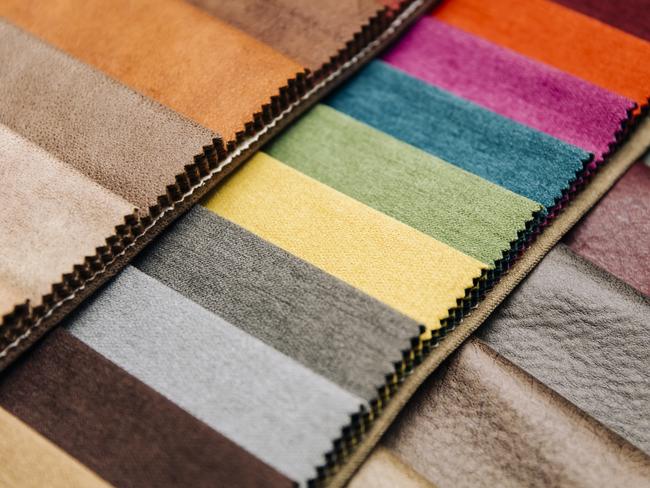
If you have no pieces at home to work on, sites such as Gumtree or your neighbourhood Facebook groups are a great place to source unwanted, preloved pieces.
If you look closely, you’re likely to find beautiful items to restore at low or (even better) no cost. Opt for items that have good bones and steer clear of any pieces made of particle board. They are just not worth the effort.
3. How much will it cost?
For many, the decision whether or not to reupholster a chair or lounge comes down to cost. A lounge chair with bare timber arms can easily set you back $700 for full reupholstery, but it may be less, depending on the fabric.
In recent years, Alberto has seen increasing interest from furniture lovers wanting to restore well-made, but tired furniture. He puts this down to two things – a desire to save items from landfill and also an appreciation of quality materials and workmanship.
He says the tide is definitely turning towards a ‘make do and mend’ approach, particularly now that old-fashioned skills such as hand-stitching and polishing are coming back into vogue.
“A lot of people are moving away from the false economy of spending and throwing away. I am all for it,” says Alberto.
I must admit, I am too. And my glorious Art Deco couch is proof of that.
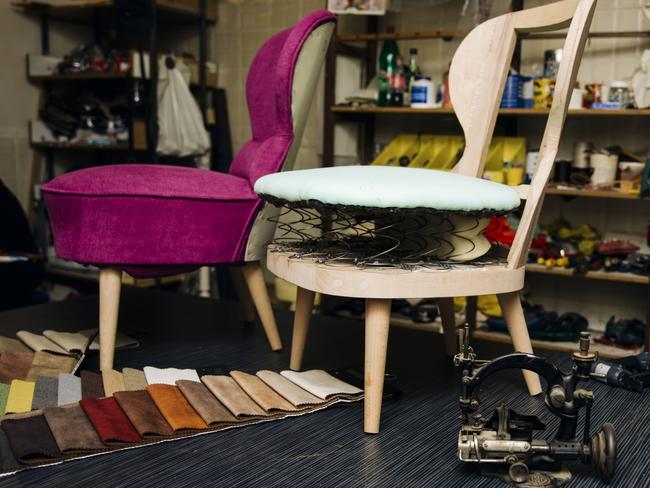
TOUGH QUESTIONS TO ASK BEFORE A HOME UPGRADE
You pick up a lot working on Home magazine.
As editor for the past six years and senior writer for 13 years prior to that, I’ve learned, talked and written about designing, building and decorating every part of your house and garden. Sometimes, what I’ve learned is just common sense, like the importance of prepping walls properly before you paint them, or the value of going with a builder who has been recommended.
Others, though, have been a complete revelation.
It still astounds me that, with the right design, you can pull the temperature down from 40C outside to 27C internally without the need for aircon with good passive solar design.
But there are some questions that just keep coming up regularly. And I’m here to help answer them for you, so here’s my list of FAQs in building.
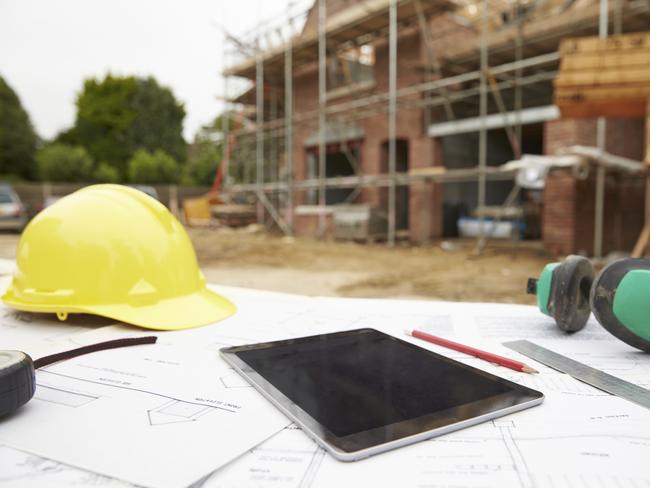
What is the best way to find a good builder?
Having been through several renovation projects, big and small, referrals are by far the best method for finding a good builder. Look for someone who is a good communicator, good at solving problems and who is, above all, honest about what they can achieve with your budget. I’ve heard too many stories over the years where the client has chosen someone cheaper only to get caught out later on as invoices start coming in for ‘variations’ and paying way more. It’s quite difficult to sack your builder once they’ve started so choose wisely. You can be a good client too by thinking through what you want before you meet up. And ask as many questions as you like. It’s your home.

How can I save money on my building project?
It depends on whether you’re talking about construction costs or the running costs on the house. A lot of us focus on finishes like tiles, benchtop materials and tapware without considering the benefits of insulation, window shading and the durability of products like hardwood timber over treated softwood outdoors, all of which will save you money over time. Go with the best basic structural materials you can afford and upgrade the finishes later on if necessary.
Is it worth getting landscaping done after the builders have gone? Can’t I do it myself?
An architect once told me ‘the difference between good architecture and bad architecture is landscaping’. Somehow, a garden makes a new house look like it belongs. Builders are notorious for compacting the soil with their machinery and a home gardener would be hard pressed to break ground, let alone create the environment for trees and shrubs to thrive. Set aside some money to at least get a basic garden design installed by professionals. If there are mature trees in your garden, write their protection into the building contract. If you’re wondering if it’s worth it, landscaping absolutely adds value to your home, to the tune of tens of thousands of dollars.

When is it a good time to renovate if you have a family?
I used to refer to my kids’ primary school playground as the renovation belt. Once the kids have started school, pressure mounts to find space for everyone and their dog. If you’re thinking of a big renovation project, this is the time to do it. Be aware that it will take about two years from concept, through council approval until the house is built. Otherwise, work with what you have. Kids grow up and, before you know it, they have their own plans and that renovation that seemed so important is no longer necessary.
Originally published as Home renovation and repairs: Healthy living - why plants are the key




